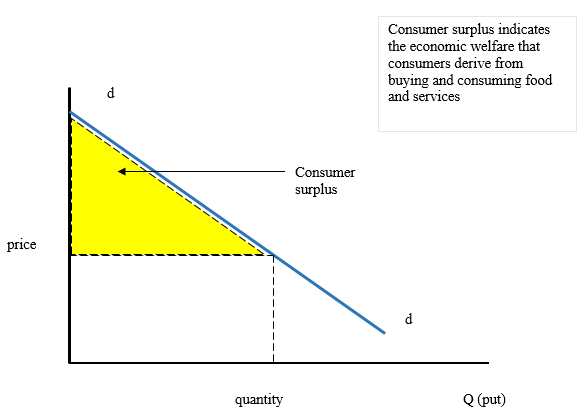Handout 4: Consumer Surplus in the Travel Market
3rd September 2015
Consumer Surplus in the Travel Market
Tour companies know that there are some consumers who are willing to pay more than the market price for the good. Those customers who buy their package holiday for less than they were prepared to pay for it achieve extra satisfaction or utility. This can be a useful marketing strategy. Some tour operators have designed holiday adverts around the theme of consumer surplus. Discounting allows tour operators to persuade holidaymakers that they have got a better deal.
Consumer surplus is denoted by the area above the market price and below the demand curve
The demand curve shows how consumers value the product. Those consumers prepared to pay a higher price will get some extra satisfaction (consumer surplus). The consumer surplus is shown on a supply and demand diagram by the shaded area.
Consumer surplus and the monopolist
If one tour operator is able to become a monopolist then they may be able to reduce consumer surplus by charging some consumers higher prices than others. For price discrimination to be worthwhile two conditions must be met. Firstly the monopolist must be able to create two distinct markets. This could be done by dividing up the market by geographic region. For example, customers flying from regional airports could be charged a high price. Alternatively, tour operators may use brands to divide up the market. Tour operators may promote holidays to the same destination, sometimes to the hotel, charging different prices for ostensibly the same package.


0 Comments